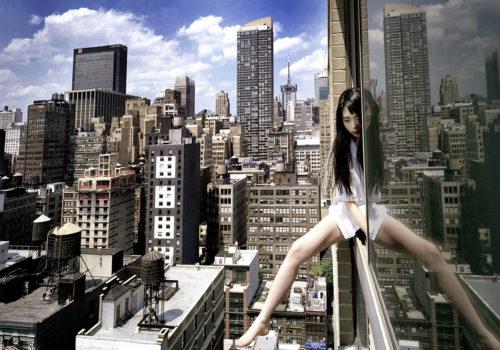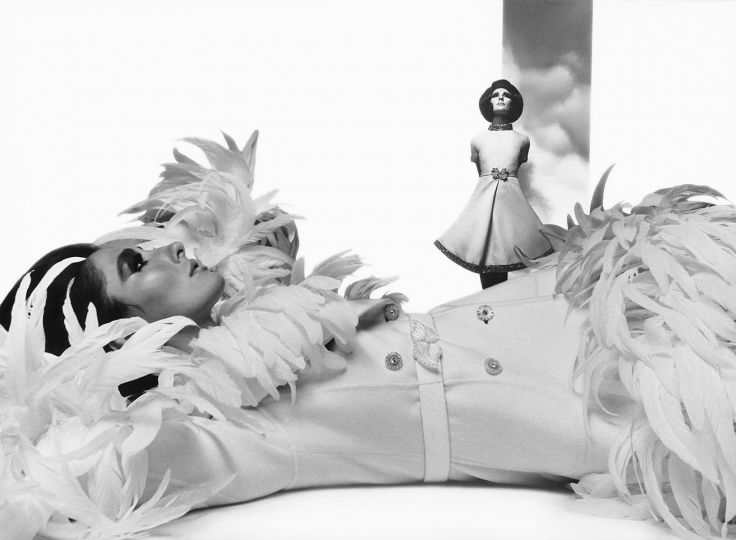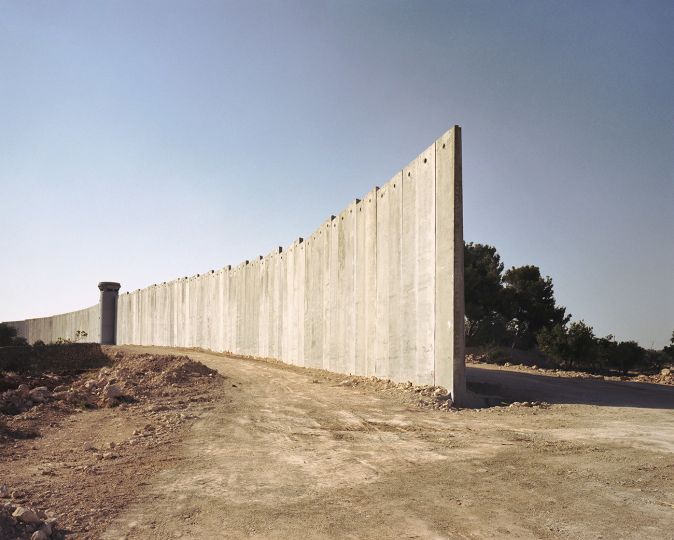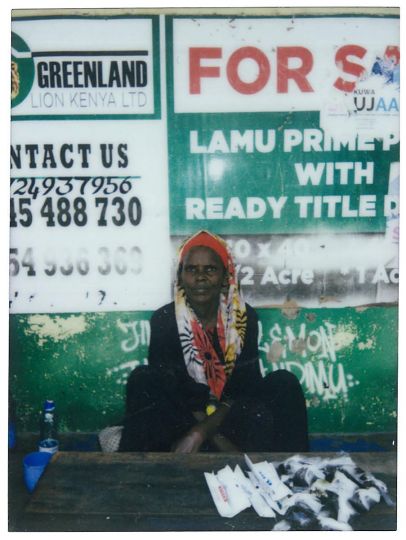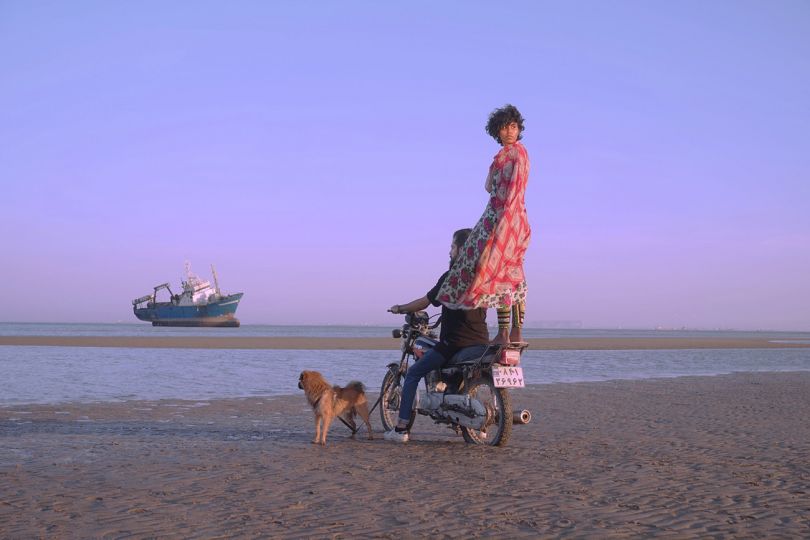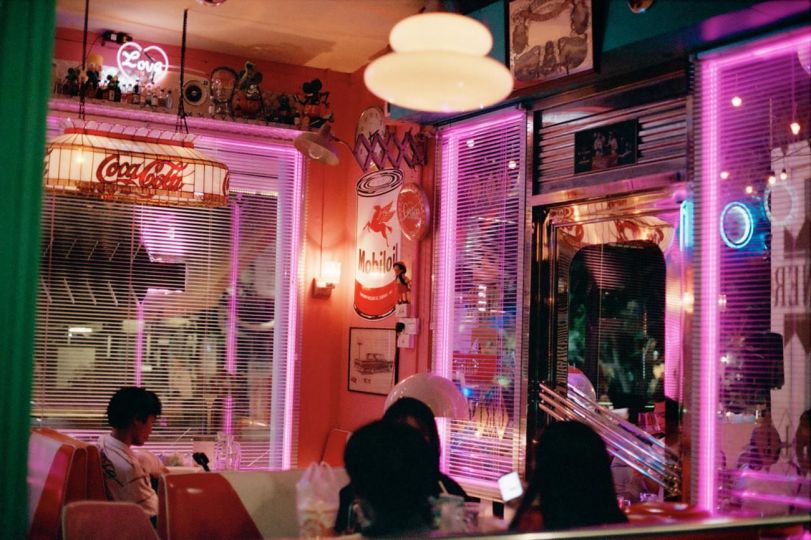Jun Ahn : Self-Portrait
Having come to the United States to study, she obtained a degree in art history at the University of Southern California in 2006, and continued her studies with two years at the Pratt Institute, this South Korean artist has been noticed above all for her Self-portrait series, the images of which were all taken on the roofs of very tall buildings. A series that she considers “a performance without an audience”, a kind of the end of youth and a confrontation with the future.
In 2009, 2010 and 2011, she was awarded a scholarship at Parsons The New School for Design in New York, during which time her work was the subject of her first major exhibitions, including a joint exhibition with Kazuna Taguchi at PS 122 in New York.
Since then, she has had a string of exhibitions, both in her native country and internationally (Lianzhou Museum of Photography, the 63 Art Museum in Seoul, and CASE Tokyo Space). In 2019, her work was awarded at Paris Photo. It is now part of many public collections: JP Morgan, Museum of Modern and Contemporary Art of Korea, Statoil, in Norway.
She loves strong sensations and her work captures the tension, it is bold and particularly disturbing and captivating, mixing vulnerability and innocence, reality and fantasy, truth and fiction. She wants to discover the invisible moment and the hidden beauty. For her, photography is the ideal technique to capture and show the world as it is in everyday life, on the border between illusion and reality. For her, the present is the void – between the past that can never be changed and the future that can never be reached.
Instagram : junahn922
Your first photographic trigger?
Jun Ahn: I have a kind of triggered image; maybe too literal, Bullet Through Apple by Harold Edgerton. I more likely researched and discovered photography as a medium though. I majored in art history during my undergraduate years. I wanted to start my own works when I was in sophomore year but was not sure which medium was suitable to visualize my thinking. So I took introductory courses in art, painting, sculpture, drawing, ceramic etc. Photography 1 was the last optional course I took during my undergraduate years. During that semester I was fascinated by one of the characteristics of the medium, there were so many element I did not remember in the frame I took, although photography is an optical representation of the visual world.
In those days, I encountered the work Bullet Through Apple, and was haunted by the image at that time. For me that image symbolically was giving the atmosphere in some part of America after 9/11. On the other hand I realized that photography creates its own power and aesthetics by eliminating the context. If you imagine that someone was in the studio of Bullet Through Apple, he/or she would described the situation like ‘ the apple was crushed after the gun shoot’ since naked human eye cannot perceive neither the bullet, nor the moment when the‘bullet went through.’ However because of photography the moment of ‘crush’ in the real world is replaced by the moment of ‘penetration.’ Verb that describes phenomenon changed because of the medium that was the aspect of photography I have been into. From then on I have been investigating the structure of the world beyond our visual perception.
The man or woman of image who inspires you?
Jun Ahn: I am rarely inspired by image of a person or people. Maybe that is the reason why I am the only person who appears in my works. Besides self-portrait, I have never included a person in my projects until now . However I remembered after I got this question, I realized the first photobook I bought was Kamaitachi by Eikoh Hosoe.
The image you would have liked to make?
Jun Ahn: As an artist, the image delivers my idea to others. As a photographer, I try to capture the surreal moment in the context of reality. As a daughter, sister and wife, I wish to make images that will make the others recall the memory of the time we shared.
A key image in your personal pantheon?
Jun Ahn: Jackson Pollock, Number 1.
Among photography, Leap into the Void, photomontage by Yves Klein.
A photographic memory from your childhood?
Jun Ahn: Somehow, I have a memory before my 1st birthday. I have photographic memory of a pattern. And remember that I was surprised by the pattern visually, and the person who had that patterned jacket hugged me. I had no clue what it was at the moment of course. Based on the visual memory, now I know that it was the pattern of a military jacket. When I told my mom about it, surprisingly she remembered the moment. The person who was wearing military jacket was my uncle-her youngest brother-and it was the first time we met during his last vacation before he was discharged (in Korea it is mandatory to join the army for about 2 years). I was about 10 months old, and my mom told me that I cried out loud when he hugged me. It is the first memory in my life.
With no budget limit, what would be the piece of art you would dream of acquiring?
Jun Ahn: Hieronymus Bosch, The Garden of Earthly Delights for my husband. Once he told me he wished to buy that long time ago when he had no idea about the price of art.
According to you, what is the necessary quality to be a good photographer?
Jun Ahn: To have a clear reason to use the medium.
The secret of the perfect image, if it exists?
Jun Ahn: Faultless image inherently without imperfection, if it exists.
The person you would like to photograph?
Jun Ahn: Minji from k-pop group New Jeans. Even though I have more than 10 people instantly in my mind, I picked this person because she is is young, but has a classic beauty.
The photographer you would like to have your portrait taken by?
Jun Ahn: Always myself.
An indispensable photo book?
Jun Ahn: If I had to pick one, for me of course my photobook published by Akaaka and CASE publishing. I have waited for someone to discover my work and propose to publish it. Hence it was very precious experience for me, like my project is reinvented as another single piece of work. Besides that, Every photo books on my bookshelf now. Among them, especially the books of photographers I met and got them to sign them. Kamaitachi by Eikoh Hosoe, Detour by Allen Frame who was my teacher, and Street of Broken Heart by the Korean photographer JungMan Kim. Kim passed away at the end of last year. On my way back home from his funeral, suddenly I recalled that he signed his photobook for me, but I could not remember what he wrote. I opened his book again when I got your question, it was written in Korean ‘my favorite and precious photographer Ahn Jun.’
The camera of your childhood?
Jun Ahn: A Canon Powershot was the first camera I owned.
The one you use today?
Jun Ahn: Leica SL2
.
Your favorite drug?
Jun Ahn: Painkiller. I often have headche since I was child.
The best way to disconnect for you?
Jun Ahn: Printing, painting, turning off my iPhone.
What is your personal relationship with the image?
Jun Ahn: What makes me experience something beyond.
Your greatest quality?
Jun Ahn: Concentration
.
Your latest folly?
Jun Ahn: Went outside with spring jacket earlier today and it was freezing.
An image to illustrate a new banknote?
Jun Ahn: We use less and less banknote these days, if there is a new banknote, I imagine a banknote with just a number and a security pattern, excluding face of political or cultural symbol.
The job you would not have liked to do?
Jun Ahn: A job graded or evaluated by rank.
And if you would not have become a photographer ?
Jun Ahn: Before I started photography, I majored in art history. And my part time job before I became a full time artist was translator of artbooks (I translated the Korean version of The Photography Book published by Phaidon, and translated 7 other books). I stopped after I started to have gallery shows and my works sold. If I had not become a photographer, I think I would have kept doing that and look for a teaching job in art.
Your greatest professional extravagance?
Jun Ahn: The moment I made up my mind I wanted to live as an artist.
What do you think is the difference between photography and art photography?
Jun Ahn: It is similar question with what is art, or can the painting of a 5 years old kid be art or not. If it needed to be clarified, it is matter of the image having, or having the possibility to have a discourse or not. The discourse can be manifested by the photographer, or can be discovered by critics, sometimes by the public.
The city, the country or the culture you dream of discovering?
Jun Ahn: Richat Structure in Mauritania, Al-Naslaa in Saudi Arabia. Many of my works especially Liberation project are taken in the desert.
The place you never get tired of?
Jun Ahn: My room.
Your biggest regret?
Jun Ahn: A memory that could not hold someone hand because of shyness, and thought there would be a next chance.
In terms of social networks, are you more into Instagram, Facebook, Tik Tok or Snapchat and why?
Jun Ahn: Instagram so far. I have been using facebook since very the early years of facebook when people in class gathered or asked about homework via facebook. I started instagram in 2014. While some of my images from a performative project Self-Portrait(2008-2013) went viral online during 2013, and I figured out there were some fake accounts pretending to be me, or pretending to be me for recruiting people to go up “rooftopping” together. It became one of the reasons why I stopped the project in 2013; to stop the spread of dangerous selfies. (Word of the year in 2013 in the Oxford dictionary was “selfie)
What have digital and smartphones taken away or brought to photography?
Jun Ahn: Most of my works, high shutter speed mostly exceed 1/2500, natural light, high ISO is possible because of the development of digital sensor. And smartphone made this technological achievement more portable to the broad audience. When I lecture in school, students do not even type, they take pictures when they wish to recall something later. It means they do not need to make the effort to memorize other’s face, surroundings, moment, etc. everything that really was there, like we do not make an effort to memorize someone’s phone number. In precious moment in life, more and more people put a smartphone between their body and the situation. And it takes away the chance to have a real memory, the true moment the reflection of light from the moment of direct contact. I don’t say reality and perceiving ‘true moment’ is better than having a clear photograph of the moment. It was how it was and possibly how it will be.
Color or B&W?
Jun Ahn: COLOR
.
Daylight or artificial light?
Jun Ahn: DAYLIGHT
.
Does your heart swing more towards film or digital ?
Jun Ahn: I mostly shoot digital, because most film cameras do not provide the fast shutter speed I need.
Which city do you think is the most photogenic?
Jun Ahn: Seoul. My hometown.
If God existed would you ask him to pose for you, or would you opt for a selfie with him?
Jun Ahn: Both. I would try mirror portrait with the god.
If I could organize your ideal dinner party, who would be at the table?
Jun Ahn: If you organize, it would be happy to have dinner with you and with the people who left notes saying they enjoyed reading this interview, it would be perfect.
The image that represents for you the current state of the world?
Jun Ahn: Image of graphs.
What is missing in today’s world?
Jun Ahn: Tolerance, Curiosity, and Real life.
If you had to start all over again?
Jun Ahn: Until that moment I will try my best to find the way to avoid it.
A last word?
Jun Ahn: Thank you for your time. With best wishes, from Jun.

